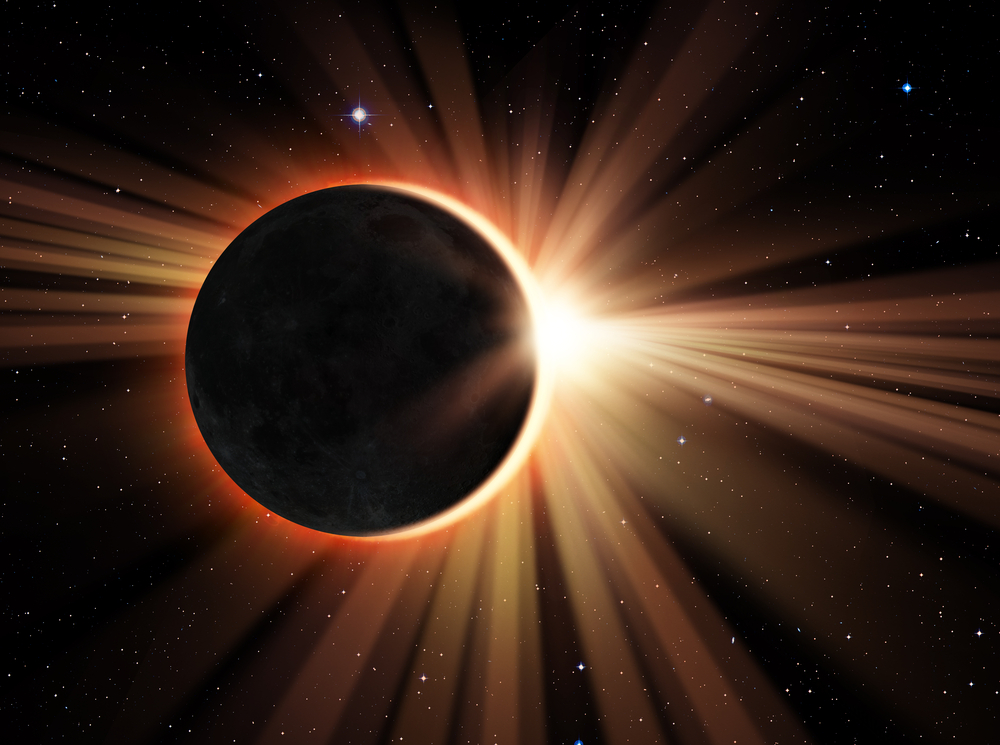
Caption: The solar eclipse is expected to be seen by millions across the U.S.
This afternoon, millions across the country will be donning special sunglasses to view the total solar eclipse.
The eclipse will occur starting at 10 a.m. local time in Oregon and ending just before 3 p.m. local time in South Carolina. See what time it occurs in your area here.
A solar eclipse occurs when the moon moves between the sun and Earth. When this happens, the moon blocks the light of the sun from reaching Earth. During a solar eclipse, the moon casts a shadow onto Earth.
The eclipse will reveal the sun’s corona or outer atmosphere, which is otherwise too dim to see next to the sun.
Total solar eclipses occur approximately every 18 months, but are rarely visible on land for more than a short period of time, if at all. However, today’s eclipse will be visible over land for about 90 minutes, allowing scientists to take measurements from the ground. NASA is funding eleven ground-based science investigations across the U.S., six of which focus on the corona.
Studies occurring during the eclipse
The sun constantly releases a flow of charged particles and magnetic fields called the solar wind.
Solar wind, along with discrete burps of solar material called coronal mass ejections, influence the Earth’s magnetic field and send particles raining down into the atmosphere that, when intense enough, can influence satellites.
Scientists can track the solar eruptions when they leave the Sun, but the key to predicting when they could happen could lie in studying their origins in the magnetic energy stored in the lower corona.
Phillip Judge of the High Altitude Observatory in Boulder, Colorado, will lead a team that will use new instruments to study the magnetic field structure of the corona by imaging the atmospheric layer during the eclipse.
The researchers will be able to image the corona to see fingerprints left by the magnetic field in visible and near-infrared wavelengths from a mountaintop near Casper, Wyoming.
“We want to compare between the infrared data we’re capturing and the ultraviolet data recorded by NASA’s Solar Dynamics Observatory and JAXA/NASA’s Hinode satellite,” Judge said in a statement. “This work will confirm or refute our understanding of how light across the entire spectrum forms in the corona, perhaps helping to resolve some nagging disagreements.”
Other studies will take several-second exposures at four selected wavelengths in just over two minutes that will capture data on the temperature and speed of solar material in the corona. This data can currently can only be obtained from Earth-based observations during a total solar eclipse.
Scientists also hope to better understand how the solar atmosphere reaches such unexpectedly high temperatures. Another experiment occurring during the eclipse, will feature scientists taking images of the lower corona in polarized light when all the light waves are oriented the same way.
“By measuring the polarized brightness of the inner solar corona and using numerical modeling, we can extract the number of electrons along the line of sight,” Padma Yanamandra-Fisher of the Space Science Institute, said in a statement. “Essentially, we’re mapping the distribution of free electrons in the inner solar corona.”
Another group of researchers at the University of Hawaii’s Institute for Astronomy will lead a team to image the sun during the eclipse from five sites across four different states about 600 miles apart. This will allow them to track short-term changes in the corona.




